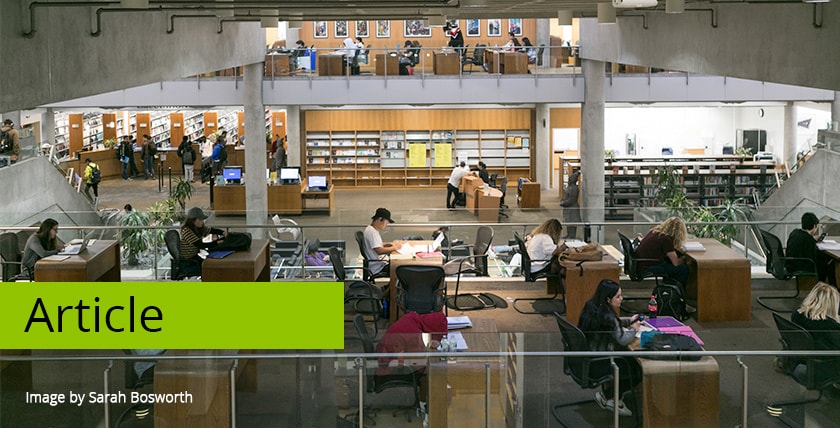What are the most in demand skills required to thrive today?

In this infographic, we highlight the top, most notable skills that current and future workers must have, according to experts.
View the insights below:
read more
In this infographic, we highlight the top, most notable skills that current and future workers must have, according to experts.
View the insights below:
read more
A breakdown of how Thai and Vietnamese policymakers can address the soft and hard skills gaps in their growing economies to equip youth with the skills required to thrive in the next decade and beyond.
There is ample opportunity for change and improvement in the workforces of Southeast Asian countries, such as Thailand and Vietnam. Currently, almost half of the Vietnamese workforce, and over three-quarters of workers in Thailand, are classed as “medium skilled,” according to data from the International Labour Organization.
The two countries are in a transitory period – moving away from agriculture and manufacturing-driven growth to more dynamic, knowledge-based economies. This presents an ideal opportunity to refocus the two countries’ educational priorities and equip their citizens with the right skill sets for the future.
Going forward, the goal for these countries’ governments is to shift the needle towards not only a larger proportion of higher skilled workers in their respective labour pools, but also to produce workforces better able to compete on the global stage, thus attracting more external investment.
As a result, for the two governments, vocational education has become a high priority, including supporting institutions that implement programs like Pearson’s vocational and experience-based BTEC courses.
The administrations of Thailand and Vietnam are both keen to see improvements in hard skills – specific, learned technical abilities, such as qualifications in information technology, reading and writing proficiency, as well as presentation and project management skills.
These are specific skills that need to be directly taught, according to Stuart Connor, Pearson Asia’s Qualifications & Assessment Director. At the same time, he adds, there are more general (or soft skills), which are more innate but no less important. These include interpersonal skills, such as the ability to collaborate, network and empathise with co-workers.
In this infographic, we dissect critical thinking and its place in the modern workforce.
View the insights below:
read more
One of the biggest realisations in the new world of remote work is that technology has proven that employees are not merely doing their jobs remotely — they’re doing them effectively.
According to the Harvard Business Review, technology firm Humanyze mined anonymous company emails, chats, and calendar data, and what they found is telling: the amount of time that employees spend working has increased by an average of 10-20% since remote working policies were mandated.
Several leading global companies, such as Twitter, Upwork, Facebook, Coinbase, and Square have given their employees the option to permanently work remotely. Some of these organisations are calling this remodelled way of working a “working from anywhere” policy, where employees can determine where they work, even if they never step foot in the office again.
A blend of organisational quick-thinking, employee resilience and technological capabilities have made this possible — things that were evidently innate, but never truly realised until necessity forced them into action.
Technology has unbound talent from a physical location, which has forever been a blocker for talented, employable individuals who possess the core soft and technical skills organisations are seeking today. Historically, the ask for found talent based in another location is to relocate — this is now a non-issue.
If the best talent on the market presents itself, and they have access to a reliable internet connection, there’s no reason they can’t be hired. The only thing getting in the way of hiring the right talent — wherever it is located — is traditional thinking and stagnant org design.
If you were ordered on a mission to travel back in time to tell an office worker from the ‘90s what their day-to-day will be like in 2020, you would be laughed out of their cubicle, and then escorted past the watercooler and by the stationery storeroom on your way out. This imaginary worker from the dialup internet slash paper-based era would not be able to fathom how their job could be done from anywhere not named the office.
And yet, to be fair to the imaginary worker, just one year ago none of us would have thought that our future morning commutes would be a different kind of door-to-door journey: we've ditched public transport and traffic congestion for a short stroll down the hallway to our makeshift home offices. From video conference platforms, to a greater trust and reliance on cloud-based technology, and an adjustment to working remotely on the fly, organisations (and their employees) have made it work.
Organisations and their employees have proven their resilience
According to Microsoft, the early stages of the pandemic saw the daily record for meeting minutes obliterated — their previous record was 900 million meeting minutes logged on March 16, and that number ballooned to 2.7 billion meeting minutes on March 31, a staggering 200% increase in a matter of 15 days. This data may come as no surprise given the global working from home policies implemented by human resource (HR) teams; however, it demonstrates how agile organisations had to be to ensure they could continue to do business during unprecedented times.
The coronavirus (COVID-19) pandemic has accelerated a whole catalogue of underlying trends, such as artificial intelligence, big data and automation. The pandemic has been more of an agent for hurrying along trends that were going to happen anyway, rather than a force of sheer disruption. The effect of the pandemic on our ways of working has brought about some HR challenges for the new normal as it pertains to finding and nurturing employable talent.
Nurturing talent is proving to be a stubborn challenge
It’s now more important than ever to identify individuals who can demonstrate the abilities and traits that enable them to work effectively in the new normal. According to Pearson research, organisations are struggling to find candidates to fill job vacancies, as well as to effectively evaluate the skill sets of candidates. Additionally, jobseekers are finding themselves in a career progression conundrum: they’re finding that they’re overqualified, under-skilled, or in some cases, both.
The research found that human resource and learning and developing professionals are focused on identifying what the impact of the changing world is on their organisation and the skill structure of the workforce, which involves understanding (and identifying) skill gaps. According to the data, 57% of organisational needs are understanding how the pandemic has impacted the structure of teams, ways of working and overall organisational design, and 33% of attention will be directed at reskilling the workforce.
The new ways of working have made soft skills, such as critical thinking, adaptability, collaboration and communication, more valuable than ever before. In addition, and while they’re deemed critical in today’s landscape, some of the core soft skills are indeed a skill gap among jobseekers and today’s workers. Critical thinking and complex information processing are two soft skills that are sought after by industry, but are lacking in the talent pool.
According to Pearson research, these are the following top 10 skills in demand in order of priority, as deemed by organisations:
Many HR professionals are considering online tools and services to address the skill gaps and to assess their immediate (and future) organisational needs. Activities such as workshops, e-learning solutions and advisory services are being increasingly leveraged to reskill and upskill workforces as form of on-the-job education.
In this infographic, we unpack exclusive insights on how industry can enable an on-the-job learning framework to ensure the workforce is constantly upskilling.
View the insights below:
While technical skills have long been recognised as the key to a successful career, soft skills such as critical thinking are increasingly becoming essential to thrive in the modern workplace.
In emerging markets such as Thailand and Vietnam, where education is evolving to align with the knowledge economy, it is more important than ever for learners to understand and pursue these soft skills, which while challenging to learn will serve them for life both professionally and personally.
Critical thinking, in particular, transcends technical skills and job types, says Anisa Zulfiqar, Business Development Manager at Pearson Asia. Regardless of the technical requirements of a job or occupation, nearly all require some form of problem solving, creativity, decision making, organisation skills and strategic thinking. And critical thinking helps with all of those.
But while this soft skill is vitally important to success for both students and professionals, the very concept can be difficult to grasp. So how do you explain it?
“Critical thinking is the ability to look at a situation logically and understand it from multiple perspectives while separating facts from opinions. It involves the ability to question assumptions so that you can make a logical decision based on all the available information and an evaluation of the facts,” Anisa says. “Put simply, critical thinking is the ability to make good decisions.”
Enhancing success in the classroom, workplace and beyond
This ability is crucial to nearly every occupation, especially those in the knowledge economy which puts a premium on human capital, and tech-intensive manufacturing, or Industry 4.0, as it has come to be known. In a survey of 1,200 different professions listed on the U.S. Department of Labor’s O*Net website, 900 called for critical thinking as a required skill.
Anisa gives the example of a nurse, who must use critical thinking to care for a patient whose condition may be changing rapidly. “You need to accurately assess the information that’s at hand, think in a logical manner, question any assumptions and make the right decision for the patient’s wellbeing.”
The evidence isn’t just anecdotal. Pearson has conducted a number of studies that show good critical-thinking skills are highly correlated to performance in a variety of jobs, as well as academic success, Anisa says.
read more
Welcome to episode 11 of the Art of Learning podcast.
We’re joined by Anisa Zulfiqar, Business Development Manager at Pearson Asia, to discuss critical thinking and its importance as a soft skill in the modern workplace.
We explore the definition of critical thinking and how it complements technical skills (0:49), the emphasis being placed on critical thinking as a desirable, sought-after skill (4:08), whether critical thinking is industry-agnostic (7:33), case studies that highlight the importance of critical thinking in the workplace (9:12), what happens when a workforce is devoid of critical thinking skills (10:46), the potential impact of critical thinking on economic output in Southeast Asia (13:31), the challenges of teaching critical thinking in Thailand and Vietnam (15:24), and more.
Welcome to episode 6 of the Art of Learning podcast.
We’re joined by Pearson’s Simon Young, Portfolio Director, BTEC Asia, to discuss what it truly means to upskill the workforce in the modern economy and the importance of career-focused qualifications.
We talked about how upskilling unlocks the true power of the workforce (1:01), changing the perception of vocational education through the success of BTEC (3:35), the process of building a BTEC qualification (8:29), why educators love teaching a BTEC qualification (12:14), the popular BTEC qualifications in Southeast Asia (14:30), how BTEC can work for learners who want to go to university and more (17:44).
For governments in Thailand and Vietnam, understanding the behaviours and career aspirations of their future workers is critical.
Informed by learnings and research conducted by Pearson and Nielsen, this infographic provides exclusive insight into the study, work and career ambitions of Thai and Vietnamese urbanites.
Countries like Vietnam and Thailand are ideally placed to shift their educational priorities and equip their youth with the skills needed to succeed in an increasingly digital world.
The world of work is changing, and it is up to all stakeholders – students, educational institutions and government authorities – to identify and adapt to the latest trends in order to prepare learners and furnish them with the skills needed in the workplaces of the future.
Across the region, the workforce is adequately peopled, and projected to grow at a steady clip but a shortage of skills is in danger of holding Southeast Asian economies back, Pearson research shows. Hard skills, like technical abilities, and soft skills such as communication, coupled with a willingness to learn throughout one’s career, are crucial to closing the skills gap and enabling Southeast Asians to compete on an equal footing in a global playing field.
The students who are choosing what and how to study today will be entering the job market in the 2030s – and it is a world full of unknowns. According to a market report by McKinsey, the change needs to start at elementary schools, as 85% of today’s young learners will, by 2030, find themselves working in professions that do not yet exist. Therefore, it is crucial to condition learners to be flexible enough to adapt and learn new skills as they progress in their education and into their careers.
Key to how we’ll work in the future is the world’s ongoing digital transformation – the so-called “fourth industrial revolution.” The attendant trends of globalisation and automation are also changing the way companies do business, and learning skills that complement the changing career landscape will be key to success in the years to come.
There is ample opportunity for change and improvement in Southeast Asian countries, such as Thailand and Vietnam. Currently, almost half of the Vietnamese workforce, and over three-quarters of workers in Thailand, are classed as “medium skilled,” according to recent data from the International Labour Organization.
The two countries are in a transitory period – moving from agriculture and manufacturing-driven growth to more dynamic, knowledge-based economies. This presents an ideal opportunity to refocus the two countries’ educational priorities, and equip their citizens with the right skill sets for the future.
Going forward, the goal for these countries’ governments is to shift the needle towards not only a larger proportion of higher skilled workers in their respective labour pools, but also to produce workforces better able to compete on the global stage, thus attracting more outside investment.
As a result, for the two governments, vocational education has become a high priority, including supporting institutions that implement programs like Pearson’s vocational and experience-based BTEC courses.
The administrations of Thailand and Vietnam are both keen to see improvements in hard skills – specific, learned technical abilities, such as qualifications in information technology, reading and writing proficiency, as well as presentation and project management skills.
These are specific skills that need to be directly taught, according to Stuart Connor, Pearson Asia’s Qualifications & Assessment Director. At the same time, he adds, there are more general, or soft skills, which are more innate but no less important. These include interpersonal skills, such as the ability to collaborate, network and empathise with fellow workers.
Equally as important is the soft skill of communication – teaching students to collaborate effectively across cultures, borders and languages. Part of this skill is a confident grasp of English - the dominant global medium of communication, says Simon Young, Pearson’s BTEC Portfolio Manager in Asia.
“It seems that English has become a key skill for communicating in business in any role,” he says. “In countries such as Thailand, where you might see a strong local workforce, the interaction with other divisions does require a strong ability to communicate in English.”
As the world becomes ever-more connected and borders less important to global business, an increasing number of workers are seeing English as crucial to their career development – as many as nine in 10 global employees consider it important, according to Pearson research. Less than one in 10, however, feel that their English language ability is adequate for the role they have. This is a crucial skill gap to address because language proficiency is also key to honing a range of soft skills.
“Language skills alone will not make someone employable, but someone is far more likely to be employable if they have language skills, as it supports the development of many of the other skills [such as communication and collaboration] needed to be employable,” Stuart says. “If you’re Vietnamese or Thai, and if you can speak English, you are ticking a multitude of soft skill boxes, too.”
read more
Welcome to episode 5 of the Art of Learning podcast, brought to you by Pearson Asia.
We’re joined by Jason Gregory, International Director, UK BTEC & Apprenticeships at Pearson, and Simon Young, Portfolio Director, BTEC Asia at Pearson, to discuss why it's important to constantly and effectively upskill the workforce in the new economy.
We explore the idea of the fourth industrial revolution and what it means for job prospects and employment patterns in Southeast Asia (1:08), the insights from conversations with government ministers and business leaders on addressing the future skills challenge (3:42), the definition of upskilling (8:04), the need for collaboration among learners, educators and governments to affect education policy change (10:13), Pearson’s role in Thailand as a strategic partner for industry and government (12:09), the steps governments and industry can take to ensure their sufficiently investing in future skills strategies (15:35), how COVID-19 has accelerated underlying trends and increased the urgency to upskill (18:16), and the importance of applying a ‘lifelong learning’ mindset (23:22).
read more










